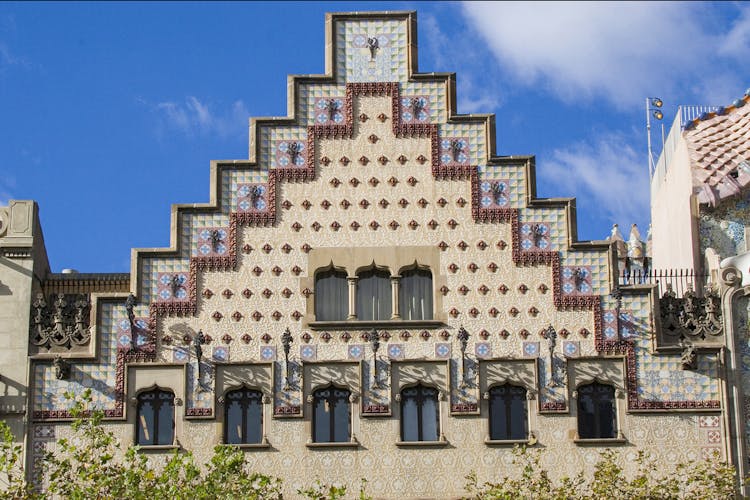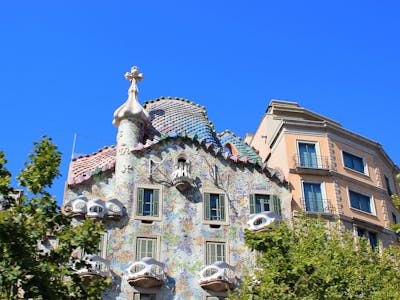The Ballart Wildlife Park is a family-run sanctuary that offers an intimate glimpse into the world of Australia's treasured wildlife. Opened in 1985, the park has been committed to offering exceptional educational programs and interactive experiences that highlight the significance of wildlife preservation. You can indulge in close encounters with these animals, fostering a deeper understanding and appreciation of Australia's unique fauna.
The Ballarat Wildlife Park in a Nutshell
Know before you go
| 📍 Location: | East Victoria |
| ⏰ Suggested Duration: | 2 to 3 Hours |
| ☀️ Best Time to Visit: | Most interactive experiences start from 11 AM and go on till 4 PM |
| 🎟️ Ballarat Wildlife Park Ticket: | price AUD 33 |
| 🚇 Closest Subway: | Ballarat Station |
Opening Hours
Daily 9 AM to 5 PM
Address
Ballarat Wildlife Park, 250 Fussell St, Ballarat East VIC 3350 (No entry on, Richards St), Ballarat East VIC 3350, Australia
Get there
Why visit Ballarat Wildlife Park?
- Encounter native wildlife: Hand-feed free-roaming kangaroos and witness the playful antics of the endangered wombats.
- Educational journey: You'll get to attend live shows and learn from passionate keepers about animal habits and habitats.
- Green oasis in the city: Ballarat Wildlife Park is perfect for family day out. Relax in natural bushland settings while spotting colorful birdlife.
- Twilight Fridays: During Spring, Ballarat Wildlife Park hosts live fundraiser show ‘Twilight Fridays’ to support local wildlife conservation initiatives while guests enjoy live music and food.
Recommended tickets to Ballarat Wildlife Park
Ballarat Wildlife Park: How did it begin?
Animal enthusiast Greg Parker's passion for reptiles began early, acquiring his first python at the tender age of ten. Over the years, his collection expanded to a staggering 300 reptiles across 50 different species. With a dream to share his love for these creatures, Greg, alongside his wife Julia Leonard, purchased a 10-hectare plot in Ballarat. Together they transformed it into what is now the Ballarat Wildlife Park, officially opened in February 1985. The park has since become a family affair, managed by the Parkers with the support of a dedicated team of permanent staff committed to wildlife care and education.
Notable animals preserved at the Ballarat Wildlife Park
1Tasmanian Devil
The Tasmanian Devil, scientifically known as Sarcophilus harrisii, is Australia's largest carnivorous marsupials and are critically endangered due to a contagious cancer decimating wild populations. As part of the vital Tasmanian Devil Insurance Program, the park plays a major role in breeding these animals to ensure the survival of the species.
Fun Fact: Tasnmanian Devils' younger ones are called Joeys and they can be as small as the head of a matchstick!

2Kangaroos
Ballarat Wildlife Park is home to over 100 Kangaroos species roaming free. You can interact closely with kangaroos in their habitat, observe their natural behavior while learning about their diet, social structure, and the challenges they face in the wild. The park's kangaroos are a favorite among visitors for their gentle nature and the unique opportunity to feed and pet them under the supervision of experienced staff.

3Tigers
The Tiger Sanctuary within Ballarat Wildlife Park features Satu, a majestic Sumatran tiger, and Kai, a striking Sumatran/Siberian hybrid. Both tigers are part of conservation efforts, particularly the Sumatran tiger, which is classified as critically endangered.

4Estuarine Crocodile
The park is also renowned for its Saltwater Crocodiles, which are the largest living reptiles on earth. You can witness the sheer power of these prehistoric creatures during the thrilling crocodile feeding sessions.

5Aldabra Giant Tortoises
Ballarat Wildlife Park provides a unique opportunity to meet Aldabra Giant Tortoises. These magnificent creatures with long necks and enormous dome-shaped shell are one of the largest tortoise species in the world and can live up to 250 years.

6Koalas
You’ll find koalas in their natural habitat at Ballarat Wildlife Park. Learn about their diet of eucalyptus leaves, and the current conservation challenges they face. The park ensures these beloved marsupials receive the highest standard of care while providing guests the chance to interact with them up close.
Did you know? To have a stronger grip on trees, Koalas have two thumbs on each front paw.

7Snakes
Within the park, there's a rich diversity of snakes like the Red-Bellied Black Snake, Python species, Anacondas and the Mainland Tiger Snake are just a couple of the many snake species you can find at Ballarat Wildlife Park.

8Wombats
Wombats, often spotted within the park's premises, hold a special place as an endangered species. You’ll get to see these burrowing animals up close and learn about their nocturnal habits, diet consisting of roots and grasses, and the unique characteristic of having a backwards-facing pouch to protect their young while digging.

Plan your visit to Ballarat Wildlife Park
The Wildlife Park is open daily from 9 AM to 5 PM. The park is closed on Christmas day.
Getting to the Wildlife Park
By Bus
The line 20 bus from Ballarat to the park takes about 17 to 18 minutes, and is often recommended as the way to reach the wildlife park smoothly and safely. There's also a PTV Regional Transit bus service that departs from the Little Bridge Station.
By Train
A train from Melbourne to Ballarat is sure to take at least an hour and 20 minutes, so you know, stock up on entertainment before you go.
By Car
The drive from Melbourne to Ballarat should again, take you the same time as a train, ie an hour and 20 minutes, but this time around, the reign is in your hands! Choose wisely. JK.
Best time to visit Ballarat Wildlife park
Over the course of a year, Ballarat has the most tourist-friendly weather through spring and autumn, which is why anytime between September and November is said to be the best time to visit the city. And subsequently the park. In a day, it's always advised to get to the park earlier, especially if you're visiting with kids so that you can see all the shows and interact with as many as animals as possible. Spending at least half a day at the park is recommended.
Restaurants near Ballarat Wildlife Park

Although having Ethiopian cuisine in Australia might make you feel all sorts of weird Cafe Merkama is here to handle those feelings for you. Often known as THE place to dine at after a visit to the Ballarat Wildlife Park, the big flavours at this cafe are sure to leave a mark on you!
Distance from Ballarat Wildlife Park: 4 KM

The Meigas restaurant is your chance to experience European/Spanish heaven in the heart of Ballarat. Widely known for its wines, croquettes, and paella - this restaurant is sure to leave your taste buds in awe for a long, long time.
Distance from Ballarat Wildlife Park: 4.4 KM

The Carboni's Kitchen is your Italian one-stop-shop to wood fire ovens and the pasta of Bologna. Perfect for a family sit-down dinner, this place is going to leave your heart longing for more.
Distance from Ballarat Wildlife Park: 2.2 KM

A gorgeous place with stunning decor, the Mitchell Harris Wine Bar is the place to go to while you relax and your kids have a pleasant time on the property! With an extensive wine and food collection, you know you'll be taken care of.
Distance from Ballarat Wildlife Park: 4.5 KM
Attractions near Ballarat Wildlife Park



